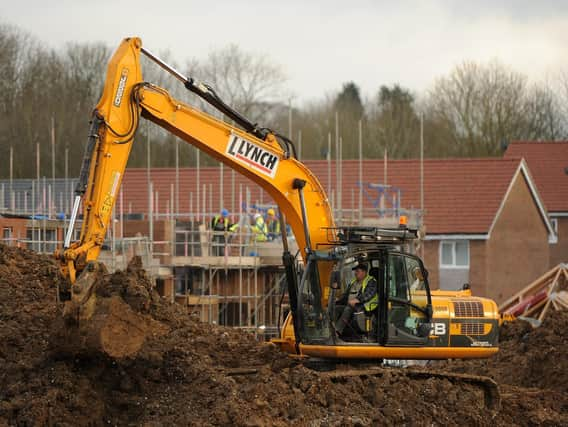Rents rise 4.5 per cent since January as government releases plans to speed up homebuilding


The region is the second-fastest growing area in the UK, with the average rent in Yorkshire reaching £670 a month, 1.5 per cent higher than the previous month.
In July last year, average rents were £641.
Ten of the twelve regions monitored by HomeLet showed an increase in rental values between July 2019 and July 2020, with two of those regions seeing an increase of more than 4.5 per cent.
Advertisement
Hide AdAdvertisement
Hide AdThe region with the largest year-on-year rent value increase was found to be the North West, showing a 6.5 per cent increase between July 2019 and July 2020.
Rents in London are down year on year, showing a 3.2 per cent fall between July 2019 and July 2020, the biggest decrease since at least June 2015.
In July 2020, the average rental value in London of £1,611 was almost exactly double the rest of the UK excluding London, at £808.
Martin Totty, chief executive at HomeLet, said: “Demand for new tenancies is still strong, HomeLet received the same volume of property applications for tenant reference checks this month as the same month last year. That coupled with the steadily increasing rents is positive for the sector, but there’s naturally caution around what could happen over the coming months.
Advertisement
Hide AdAdvertisement
Hide Ad“It’ll be interesting to see what trends emerge, especially on the regional level and how these variations will affect both landlords and tenants across the country over the coming months.”
Rising rents are good news for landlords, maximising profits at a time when interest rates are at a historic low, though high rents prove an enormous barrier for young people trying to get on the housing ladder.
Saving enough for a deposit on a home can be impossible while paying a large portion of income towards living costs, especially as a Bank of England base rate of 0.1 per cent, which helps those paying mortgages, means savings grow extremely slowly.
This comes as the government pledged to remove the requirement for developers to build social housing in new developments, as part of planning reforms.
Advertisement
Hide AdAdvertisement
Hide AdNew rules will scrap “red tape”, the government said, speeding up the homebuilding process.
However, housing charity Shelter said the plan "makes no sense" given that there are currently more than a million people on the waiting list for social housing, who struggle to afford rising private rents.
Polly Neate, Chief Executive of Shelter, said: “Decades of political decisions have left social housing gravely endangered. If the government now removes the requirement for developers to build their fair share it could face extinction. Over a million households on waiting lists for social homes risk having their hopes dashed.
“Section 106 agreements between developers and councils are tragically one of the only ways we get social homes built these days, due to a lack of direct government investment. So, it makes no sense to remove this route to genuinely affordable homes without a guaranteed alternative.
Advertisement
Hide AdAdvertisement
Hide Ad“The government says it wants to build beautiful, but that cannot be only for a fortunate few. Struggling renters and key workers with no savings face being left behind. This pandemic has shown us the importance of safe home like nothing before, but a safe home will remain a pipe dream for too many if the government fails to invest in social housing. Cutting up the planning system must not result in cutting social homes.”
Housing Secretary Robert Jenrick MP said: “Our complex planning system has been a barrier to building the homes people need; it takes seven years to agree local housing plans and five years just to get a spade in the ground.
"These once in a generation reforms will lay the foundations for a brighter future, providing more homes for young people and creating better quality neighbourhoods and homes across the country. We will cut red tape, but not standards, placing a higher regard on quality, design and the environment than ever before. Planning decisions will be simple and transparent, with local democracy at the heart of the process.
“As we face the economic effects of the pandemic, now is the time for decisive action and a clear plan for jobs and growth. Our reforms will create thousands of jobs, lessen the dominance of big builders in the system, providing a major boost for small building companies across the country."